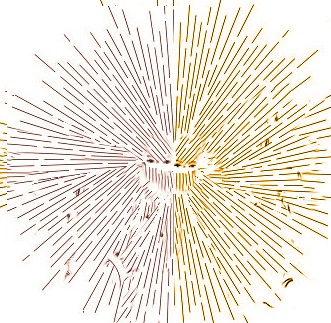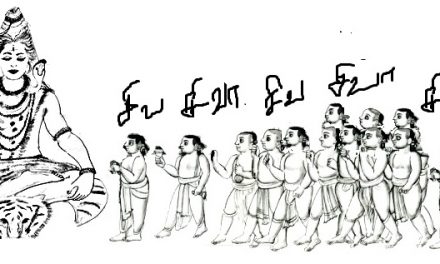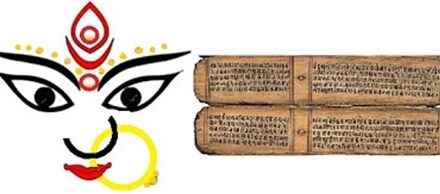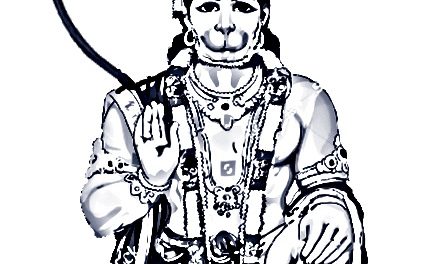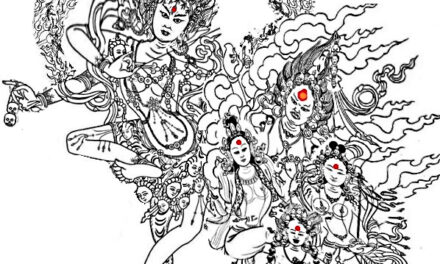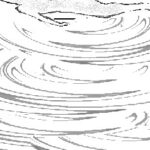JOURNEY OF JEEVATHMA-3
-Santhipriya-
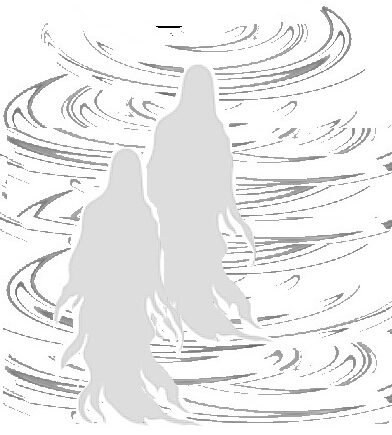
THE JOURNEY OF JEEVATHMA- 15
Monthly and yearly Shrartha and Tharpan
313) As per Garuda Purana, the soul which is in the form of a Pretha, descends from the sky to partake the food offered especially on the 11th and 12th days rituals in the earthly plane. The food partaken on those two days gives the Pretha enough energy needed for its onward journey as the Yama Ganas tie the soul with a rope and drag it away to Yama Loga.
314) As per Garuda Purana, during this journey, the soul keeps looking back at its former home and family. Unable to communicate with them it keeps crying, as it walks with the Yama Ganas. The travel is non stop, each day covering a distance of 247 kadha per day (One Katha is stated to be 16 Kilo meters distance) The hunger and thirst for the Pretha are directly imparted by the rituals performed for it by its family members in earth plane.
315) The path of Pretha’s travel to Yama Loka is determined by the karmic deeds earned by the body in which it resided; while righteous deeds gives the Pretha easy journey, sinful acts endure a long and arduous path filled with suffering. Therefore, different types of Prethas travel in different routes based on their karma.
316) One may wonder how would the Pretha walk as it has no physical body. Similar to the path of travel available in earthly plane for humans, paths are also available in the cosmic too for Pretha’s to walk. It may not be visible to the human eyes, but they walk on them.
317) These being divine law as stated in Garuda Purana, the karmas, rituals etc performed sincerely by the families of the departed souls greatly help the Prethas to reduce the intensity of the difficult path they had to traverse, at least until they reach Yama loga, in a peaceful state of mind.
318) The sincerity with which the Karmas and rituals are performed for an year by the families of the Pretha travelling, is in a a way appears as an appeal to Lord Yama to show mercy to the Pretha; besides the effects of the vibrations of powerful mantras recited in them pleases Lord Yama who then order the Yama Ganas not to ill treat the Prethas on way and ensure that the Pretha remained freed of hunger and thirst.
319) The Pretha tormented with hunger and thirst is allowed to stay in a place, once a month, on the day of its death, which is called as its lunar date (Thithi). Hence, on the day of the lunar date of the demised, which appear every month, the Kartha offers Pinda Dhan which is a ritual performed. Thus, the Thithi performed in the next 12 months symbolically satisfy the Pretha’s immense hunger and thirst besides help in its spiritual journey.
320) A tithi is a lunar day. There are 15 tithis in the waxing cycle of the moon (shucks paksha), and 15 tithis in the waning cycle of the Moon ( Krishna paksha) each day controlled by specific deity. Tithi is important for shrartha because it’s the specific lunar day on which a departed ancestor passed away, and performing Shardha on that particular tithi ensures their souls receive nourishment, peace, and liberation (Moksha) in the afterlife by the blessings of the controlling deity of the day.
321) It takes a year for the Pretha to reach Yama Loga; hence, adhering to the shastras, the family members refrain from attending any auspicious event, festival or perform auspicious ritual for the next one year after the demise of their family members.
322) Tharpan: The family member performs the ritual called Tharpan, which falls on every month. The primary objective of Tarpan is to satisfy and gratify the ancestors who are in the form of Pithrus; seek the welfare and well-being of themselves.
323) During one year after one’s demise, the family members will not attend to any Pujas, homas or other auspicious rituals i.e. until till the first year shrartha ceremony gets completed. Even after a year, on the day the Tharpan no daily pooja is to be performed at home till Tharpan is completed; however, after completion of Tharpan, the daily rituals/poojas should be performed without fail, after taking bath. This will help in receiving the blessings of the ancestors.
324) As per Dharma shastra, on the day of Amavasya when the sun is in conjunction with the moon, the Pithrus remain more thirstier and hungrier; hence, the Tharpan is done with black sesame seed and water, combined with sacred mantras to satiate them which in turn beget their blessings.
325) The traditional belief is, on the day the Tharpan is done, the Pithrus visit their homes and stand near the doorstep to receive the water mixed with black sesame seeds.
326) It is stated in the shastras that in the event the Tharpan is not done by Karthas for any reasons, the Pithrus will go back disappointed and agonized with hunger and thirst. Therefore, those who could not perform Tharpan if offer green grass to the cows, it will satiate the Pithrus.
327) Three Amavasya is sacred in a year. The one falling in January (Thai), July-August (Aadi) and the third one in Sept-October(Purattasi). The fifteen days in the month of Purattasi(Sept-October) is called Malaya Paksha. As per the texts in the shastras, during Mahalaya Paksha, also called as Pitru Paksha, the ancestors reportedly visit the homes of their descendants to bestow blessings of health, wealth, knowledge, and longevity upon their family and then goes back. Therefore, Tharpan rituals performed during the period of Mahalaya Paksha is considered highly auspicious and sacred.
328) Tharpan performed in certain temples, rivers, and the sea are considered to be more sacred. It is best to perform Tharpan in places like Thiruvalangadu, Thiruvallur, Rameswaram, Thirumayam, Aranmanipatti, Thiruvannamalai, Thiruvidaimaruthur and Thirunallar in Tamilnadu and Kashi and Gaya in Northern India.
329) Above all, performing Tharpan in the town of Thilatharpanapuri (located between Tiruvarur and Poonthottam) in Tamilnadu is considered highly sacred because both Lord Rama and Lord Lakshman performed Tharpan to their father King Dasharatha, besides divine bird Jatayu, whom they respected like their father.
330) The shardha ceremony and Tharpan are performed to appease our ancestors and seek their blessings for the family members. Hence one should perform them without fail.
331) Masikam: It is a ritual performed once a month by the Kartha in the first year of one’s demise. In this ritual, the Kartha offers food and water (Pind) to the Pretha of the departed soul to aid the soul’s journey to the next realm and to take good re-birth. The date on which Masigam falls in each month is based on the Lunar date (Thithi) of the demised.
332) Strangely some time two Lunar dates fall in the same month, hence, the Pundits opine that 16 Masikam are to be performed in the first year after one demised.
333) In some of the families, the Karthas perform Masikam once in six months due to their family circumstances; however, performing in such a manner is not allowed in shastras.
334) Shardha Ceremony: Shardha ceremony is performed in honor of the demised ancestors, express gratitude, and facilitate their peaceful transition to the afterlife. It is performed to appease the soul of the demised to remove their sins in the first year. It is performed on a specific lunar date (Thithi) of the ancestor’s death to beget their blessings; it also brings prosperity and peace to the family members.
335) Based on the lunar date (Thithi), sixteen shardha ceremonies are to be performed to the demised in the first year. They are also termed as Ekodhishta shardha ceremony. It also ensures that the sixteen divine aspects in the body of the demised reach the realm of heaven. Those Shardas are also called Oona Masika, Una Apthika Masika, Tripatshika Masika, and Monthly Masika.
336) In the same manner how the Pithrus visit their homes and stand near the doorstep to receive the water mixed with black sesame seeds on the days when Tharpan is performed, Pithrus visit homes even on the day the Shardha Ceremony is performed to receive the food offered to them.
337) The shastras state that the Pithrus who visit our home on the days when Shardha Ceremony is performed stays with us for three days. In the ancient period, the Karthas used to perform a ritual called Una Masikam, one day before actual Shardha Ceremony was performed. The Pithrus therefore visited homes on the day of Una Masikam, attended Shardha Ceremony and then stayed back on the third day before going back.
338) Parvana Shardha: Shardha Ceremony has many versions. The Parvana Shardha is done in which a fire ritual is performed requesting Lord Agni to carry the offerings to the ancestors. Then rice balls often mixed with sesame seeds, are offered to the previous three generations of ancestors to help their souls attain peace and liberation. Two Pundits who performed them will be well fed with feast and dakshina given to their satisfaction.
339) Sangalpa Shardha : The ritual of performing Sangalpa Shardha which is a simplified alternative to the more elaborate shardha performed and involves only offering of food and dakshina to two Pundits. No Homa is performed, nor Pinda dhan given.
340) Aama Shardha: The third type is called Aama Shardha. This is also another simplified alternative to the more elaborate shardha performed. Two Pundits will be invited on the day of Shardha and given enough money to purchase groceries for home, besides, separate Dakshina to please them.
341) Hiranya Shardha: The fourth Shardha is known as Hiranya Shardha which is another simplified alternative to the more elaborate Shardha performed. In this ritual, two Pundits will be invited on the day of Shardha and they will be given two pieces of raw plantin, enough rice besides Dakshina.
342) Those who can not afford to perform any of the above Shardha can simply perform Tharpan with water and sesame seeds praying Pithrus to bless them.
343) While performing Shardha rituals, when the clan, name, star, and date of death of the deceased ancestors are recited with mantras, the chants of the mantras convert the offerings made to the Pithrus into life energies consumable by them which is not visible to our eyes.
344) In light of the above, the concerned Pithrus belonging to those families are only able to accept and consume the pindas given by their karthas. Pithrus belonging to other families can not even touch those life energies which belonged to other families. This is one of the divine miracles which stand beyond our contemplation.
345) Sometimes it may so happen that the shardha ceremony of father and mother fall on the same day though they may have demised with a gap of few years. In such eventuality first the shardha is performed for father and then only mother’s shardha will be done on the same day, separately cooking for each shardha.
346) Another peculiar situation arises in which the yearly Tamil/Telugu/Kannada or other regional new year function; parents Shardha also falls on the same day. In such situation, the new year function will be celebrated first, followed by the shardha ceremony.
347) Dharma Shastra says that those who are sick or unable to perform shardha due to physical disability can perform the shardha ceremony with the help of others who can perform them.
348) Even if the brothers stayed next doors, they will have to perform the shardha of their parents separately. In joint families the younger brothers will have to remain seated by the side of their eldest brother throughout the shardha ceremony performed.
349) The shardha ceremony for the parents both of whom died in an accident will be performed together without taking into account who died first. However, the cooked food offered as oblation in the ceremony will have to be kept in two separate utensils.
JOURNEY OF JEEVATHMA- 16
Periods of mourning for different kinds of death:
350) Those in whose home death has taken place, family members belonging to those homes should not visit the home of another in whose home too death has taken place for a period of 31 days (till one-month rituals are completed). This is a tradition followed based on the texts in shastras.
351) The periods of mourning which results in impureness or in auspiciousness to the families have been divided into several groups. They are: period of in auspiciousness goes away after taking bath, Pakshini period of in auspiciousness which is 1½ days period of time, One day in auspiciousness, and ten days in auspiciousness. The in auspiciousness refers to the period of mourning or impurity in the home of dead.
352) Even if some one in a family met death in accident or unnatural mode, the relatives of the family observe certain period of mourning. However, the rituals for such deaths are performed on delayed schedule something like, after 6 months or after 24 days, as per the tradition observed by different communities.
353) The family members or their relatives need not observe mourning or perform Tharpan for those who die by suicide since no traditional rituals exist for those who meet unnatural death. It is stated that unlike standard death rituals performed for the soul’s liberation, an unnatural death necessitates more complex ceremonies to prevent the soul turn into ghost like status.
354) If a sanyasi met death, no mourning is to be observed by his original family members nor to the parceners. The mourning period or impureness of the family members goes away upon taking purification bathe on hearing the news.
355) If some neighbour had died, whose home lay within a distance of 88 feet, it is customary for the neighbors to avoid cooking and eating in their homes until the deceased body has been removed for cremation.
356) If one ate a meal in the home of dead during the period of mourning, the shastras prescribe period of ritual impurity to them for the next 31 days, in which period of time they should not visit any temples or take part in auspicious rituals.
357) The shastras prescribe that an individual who has performed shardha ceremony in their home should not visit a house of death of another family member or friend on the same day after performing shardha ceremony, to offer condolences.
358) Similarly, during the period of mourning, family members do not attend any auspicious rituals of any kind held in others home or in public places.
359) During the period of mourning, impurity or inauspiciousness the members in the houses should not even prostrate to any elders- howsoever older they may be- for any reasons, which is considered as auspicious. This tradition is observed as a mark of respect to the departed soul in that family.
360) Those who are in the period of mourning due to death, should not touch the person who is also in the period of mourning due to death in their home. In such a situation, both will have to take bath to remove impurity occurred from each other.
361) Those who visit the home of another to offer condolence who is in the period of mourning on account of death in their family, after returning home should enter their home only after washing their legs outside and then immediately take bath and wet all the clothes they were wearing/carrying with them. Till then they should not touch any other things at home. These are rituals of purity prescribed in shastras after visiting the house of a dead person.
362) The entire male members in a family right from father to sons, sons of sons (grand children), their sons (great grand children), their sons (great great grand children) in the order of seven generations are collectively termed as paternal side Parceners/ Co-heirs
363) All the members in the first seven generation (parceners) family have same period of mourning on account of the death of any of the male members in any one of those seven parceners families.
364) However, those in the eighth generational families (parceners) will not have mourning period if anyone died in the first-generation family. The seven generation for the eighth generation begins only from the second generational family members. Similarly, the first-generation family will not mourn the death of any member in the eight generation.
365) The first generation to seventh generation is one set of parceners; the second generation to eighth generation is another set of parceners; the third generation to nineth generation are another set of parceners and the seven generation members termed as parceners goes on in this manner.
366) Let us understand it better. Supposing in a family, 10 generational parceners were alive. They were in the following order. Gopalan, Krishnan, Madhavan, Vasudevan, Chakrapani, Uppili, Raman, Nandan, Ramesh and Mukundan. Which family members are parceners who observe mourning periods alike?
367) 1st Group Parceners: Gopalan, Krishnan, Madhavan, Vasudevan, Chakrapani, Uppili and Raman are parceners.
368) 2nd Group Parceners : Krishnan, Madhavan, Vasudevan, Chakrapani, Uppili and Raman
369) 3rd Group Parceners : Madhavan, Vasudevan, Chakrapani, Uppili, Raman, Nandan and Ramesh
370) 4th Group Parceners : Vasudevan, Chakrapani, Uppili, Raman, Nandan, Ramesh and Mukundan
371) In the death of some one below seven years in a family, as per the rules prescribed in the shastras only the particular family will observe mourning for 10 days. The parceners do not have mourning period on account of the death of anyone below seven years in their seven generational families.
372) In the event the members in the family tree have not met or spoken for seven continuous years, then in the event of the death of any one in any of their families, the other members do not have to observe mourning at all; simple purificatory head bath is sufficient. However this is only a traditional practice observed and not based on any doctrine prescribed by the shastras.
373) If a death occurs in the family, till the first year shardha ceremony gets completed, no auspicious event including marriages will be performed in the family. The auspicious events begin by performing puja rituals in a temple next day to shardha ceremony.
374) However, this restriction exempts prefixed marriage functions. The shastras say that the pre arranged marriage functions can continue uninterrupted. However, if some death had occurred just 15 days before the marriage, the marriage should be postponed to another date after completion of 13 days ritual.
375) As per the shastras, the inauspicious period due to mourning on death ends only if you take bathe after 8.24 AM. Since this is not feasible in the modern days of time, the Pundits opine that if you take bath after 5.00 AM, the inauspicious period due to death mourning ends. Reason for taking bathe after 8.24 AM is bit confusing to explain as it is based on almanac and shastras.
376) As prescribed in the shastras, the death which takes place up to 1.30 AM (in the mid of night) goes into the account of previous day, and death taking place after 1.30 AM goes into the account of next day.
377) In the event some news on the death of some one in the parceners family is received by the family performing shardha ceremony, the shardha ceremony will not be abandoned, but continued till end. The inauspicious period for them will begin only after the shardha ceremony if fully completed.
378) A bachelor does not have inauspicious period on account of any death in the family. He must only take purification bathe on hearing the news.
379) During marriage ceremony if the parents of either the bride or the bridegroom died, the marriage ceremony will continue to be held till Shesha homa is completed. Shesha Homa is a concluding Vedic fire ritual performed in some Tamil Brahmin weddings, often on the fourth day, to mark the completion of the marriage ceremonies. A portion of the ghee from wedding homa fire is taken and sprinkled on the bride’s head to bless the new union. Till then they need not observe mourning.
380) Supposing shardha ceremony of parents fall due while the family was in the mourning due to the death of some one in one of the parcener’s family, the shardha ceremony in a new date can be performed only after the period of mourning gets completed.
381) A sanyasi (one who has formally renounced the world) is not required to observe a period of mourning for their parents death. Upon hearing the news, only a purifying bath is taken as a mark of respect for having taken birth from them.
State of ritual impurity (mourning) : Purification bathe
382) Upon receiving the death news of a married daughter, her parents, brothers and unmarried sisters need not observe a full mourning period; instead, they get purified by taking a simple head bathe; the period till they take bathe is observed as short period of mourning.
383) But other relatives if any will consider the period as ritually impure or unclean state which exit before bathing. They too get purified upon taking head bathe. If they had already taken bathe before the news came, still upon hearing the news of the death, they have to bathe again.
384) If a family member for some reasons, received the news of death of their own family member (which has mourning period of ten days) after one year, they need not observe any period of mourning. Simple purificatory bath is sufficient.
385) Similarly, if a parcener received the news of death of any one of the family members (which has mourning period of three days) in seven generations after the initial period of 11 days of ritual, he too need not observe full period of mourning; instead, purificatory head bath is sufficient.
386) The brothers have no mourning period over the death of their sister’s husband; simple purificatory bath is sufficient.
387) Similarly, the brothers have no mourning period over the death of their married sister; simple purificatory bath is sufficient.
388) The parents of the daughter have no mourning period over the death of their son-in-law (daughter’s husband); simple purificatory bath is sufficient.
State of ritual impurity : One day mourning
389) If the news of the death of a family member which necessitates three days of mourning is received by the relatives/parceners after three days of the death, only for one day mourning period is sufficient.
390) If the news of the death of a family member which necessitates ten days of mourning is received by the relatives/parceners after six months upon the death, then one day mourning period is sufficient.
State of ritual impurity: 1½ days (Pakshini) mourning
391) One and a half days mourning period is called as Pakshini period of mourning. The term comes from ancient traditions.
392) The Pakshini period consists of one day plus two nights or one night plus two full days.
393) In case one received the news of death any time in the day, then they will have to observe that day’s night period plus next day’s night period as mourning period-Two nights plus one day.
394) Similarly, if the news of death is received in the night, they will have to observe that night plus next two days period as mourning period. They can take bathe in the night of second day or early morning on the third day for purification.
395) If the death news involving mourning for one and a half days- Pakshini- is received after 36 hours of death, then if the news is received during day, the mourning period is restricted to that day and if it is received in the night then the mourning period is also restricted to that particular night only.
396) Whoever attracted ten days mourning period on account of death, if they happen to hear about the news after three months, but before the next six months, mourning period of one and a half days from the time they heard is sufficient.
397) But if the same news is received by them after six months, but before one year, they will have mourning period of one day for the death.
State of ritual impurity : Three days mourning
398) The married daughter of a family has three days mourning period for the death of her parents.
399) While a family (say X family) who is observing ten-day mourning period for one death, receive within ten days, news of another death news (Say ‘Y’ family) which also involves ten days mourning, then the family need not observe ten more days mourning after completing the mourning for first death; both the mourning period get overlapped and end on the tenth day itself.
400) In the event the same family (say X family) receive the death news after 11 days, but before 30 days after the ten-day mourning of the first death has been completed, ‘X’ family will mourn only for three more days for the second death.
401) In the event the same family (say X family) receive the death news after 30 days after the ten-day mourning of the first death has been completed, ‘X’ family will have to observe afresh ten-days mourning for the new death.
402) While a family (say X family) who is on three-day mourning for one death, receive anytime within three days, death news of another (Say ‘Y’ family) involving three days mourning, then both the mourning period will get overlapped and end on the third day.
403) However, if the same death news is received after the ten days rituals have been completed, but before 13 days simple purificatory head bath is sufficient.
404) In the event the same news is received on any day after 13th day ritual is concluded, they will have to necessarily observe three days mourning.
405) Once the sons and unmarried daughters of a family receive the news of the death of their parents, then they will have to observe ten days mourning period. Due reasons beyond control, they happen to receive the news say after six months or even one year, the period of ten days mourning is still applicable to them.
406) Similarly, regardless of when the wife received the news of the death of her husband-may be immediately, or after few days/few weeks/few months or years, she has to observe ten days mourning over her husband’s death.
407) In the event a family (say X family) already observing three-day mourning period for one death, death news of another (Say ‘Y’ family) which involves ten days mourning is received within three days, then the family can not end the mourning on the third day. The mourning period of both will get overlapped and end only on the tenth day, which means additional seven days of mourning is to be observed.
408) While a family (say X family) is observing three-day mourning period for one death, death news of another (Say ‘Y’ family) which involves ten days mourning is received on the fourth day after end of three days mourning. Then say X family will have to observe ten days of mourning for the second death, which means a total of 14 days mourning for two deaths.
409) Supposing a child’s parents are on ten days religiously inauspicious period called impure state due to birth of a baby, when the same child died within ten days, both impure state and mourning period of ten days will end on the tenth day to the parents.
410) While ‘X’ who is engaged in 12 days death ritual receives the news of birth of his child, the death rituals can continue unhindered as the ritually impure state on account of birth will not affect it. However, if the news of the death of the same child is also received before the 12th day ritual is completed, then both the deaths overlap and ends up on the 13th day when purification ceremony is held.
411) If, however, the child’s death occurred after performing the 13th day ritual, then the family will have to observe ten more days mourning for the child’s death.
412) Another case study. Some one, say ‘X’ who is in the state of ten days mourning is bedridden in serious condition, he can not take bath at the end of tenth day ritual for purification. In that case, some one, say ‘Y’ can touch him, take bathe, dry up; come again touch him and take bathe, dry up; touch again and take bathe dry up and come again; when he repeats the process ten times, the bedridden person gets purified. However, after the patient returns to normalcy, purification ceremony in the name of some homa will have to be performed at home. This practice was in vague in ancient periods of time in hindu tradition based on Dharma Shastra, though no such procedure is found in the scriptures.
413) Another peculiar custom exists in hindu tradition. Let us understand the following three situations. This is first Scenario. While ‘X’ was engaged in the post cremation rituals for his demised father, mother of ‘X’ too expired within ten days ritual period. The post cremation rituals for father will not be discontinued. Guided by the Pundit, the rituals for both father and mother are simultaneously performed as guided by the pundit. The mourning period of ten days for both father and mother gets overlapped and ends on 13th day.
414) The second scenario- While ‘X’ was engaged in the post cremation rituals for his demised father, mother of ‘X’ too expired on 11th or 12th day of the ritual underway for his father. ‘X’ can not perform the 13th day Subasweekaram as the mourning period in honor of mother will extend the ceremony by one day. ‘X’ will have to perform Subasweekaram for both father and mother on 14th day, after completion of all the rituals meant for both father and mother as guided by the pundit.
415) In the third scenario, While ‘X’ was engaged in the post cremation rituals for his demised father, mother of ‘X’ too demised on 13th day before the Subasweekaram commenced at the end of father’s 12-day ritual, then ‘X’ can not perform the 13th day ceremony as the mourning period in honor of mother will extent to enable him perform 12-days ritual for his mother. Therefore, ‘X’ will have to perform Subasweekaram ceremony for both father and mother only on 26th day after completion of post cremation rituals to them.
416) In the fourth scenario, while ‘X’ was performing ten-day post cremation rituals for his demised mother, father of ‘X’ too expired in one of the ten days ritual period. Say the father died on the fifth day of the ritual. The post cremation rituals- for 10 days- for both mother and father will be performed simultaneously as guided by the pundit, but the rituals meant for 11th and 12th days will be performed only after waiting for five more days when the mourning period of 10 days to be observed for his father ends. See below how it is done:
• First five days rituals performed for mother as guided by the pundit. Ritual for mother halts.
• From 6th day onwards five days ritual is performed for father who died on the fifth day during mother’s ritual
• First 5 days ritual for mother plus next 5 days ritual for father ends on 10th day.
• From next day remaining seven days ritual (upto 12th day rituals) for both are simultaneously done.
• This thus works out to a total of 17 days rituals to be completed before performing Subasweekaram ceremony on the 18th day.
417) In the fifth scenario, while ‘X’ was performing ten-day post cremation rituals for both father and mother or either one of them, some one in the family of sons died or the unmarried daughter met death. Since maximum period of ten days mourning is already underway, the death of another family members will not add up. The mourning period for them merges with the mourning period of father/mother to enable the family perform Subasweekaram ceremony for all three on the 13th day.
418) In some families, the head of the family -father- have step wife or even third wife whom they had married unofficially. In certain communities and rural areas, even today, it is quite rampant that the head of the family -husband- marries few more women, live with them and even produce children through them while the real wife is alive. Though the said marriages and relation is not legal in law, based on customary and caste traditions, the death of illegally married wives of one’s husband are condoled and mourned for ten days by the official wife and children born to her. However, if they hear the news after one year, then they need to observe only three days of mourning period.
419) When the wife is pregnant, her husband should not shoulder the corpse of any relatives other than his own father, mother and brothers who had no sons or daughters.
Mourning : List of family members whose death warrants ten days of
mourning period to the entire members of one family
• Father and Mother
• Own brothers and their wives
• Seven years old plus sons of brothers.
• Death of sons below seven years do not warrant ten days mourning; purificatory head bath is sufficient.
• However, if the son had undergone thread ceremony, then their death causes ten days mourning.
• Unmarried sisters
• Sons and unmarried daughters of father’s step wives (who were not officially married, but privately married besides legally married wife)
• Paternal and Maternal Grand parents
• Brothers of father and their wives
• Sons and unmarried daughters of father’s brothers
• Sons of those sons from father’s brothers
All the above applies to the death in seven generation of parceners
Ten days of mourning period to adapted sons :
• Over the death of their adapted father and adapted mother
• Seven generation parceners of adapted father and their sons, son’s sons and unmarried daughters in their family.
• No need to mourn the death of actual parents, simple purgatory head bath is sufficient on hearing the news as mark of respect for having given birth to him.
Ten days of mourning due to death of child :
For the death of a new born child within ten days of its birth the following members observe ten days of mourning.
• Parents of the child
• Married brothers of child’s father besides sons borne to step wives of the grand father of the child if any.
Reference:
The mourning days given above are based on the information found in the following books:
1. ‘Vaidyanatha Dikshitheeyam: Asausa Kandam’.
2. ‘Asausa Deepikai’ written by Tamilasura Munivar in the 17th century
3. ‘Asausa Deepikai’ published by Ma. Vaidyalinga Pillai of Jaffna, in the year 1882
4. ‘Agora Siva Pathati’, a manual for Saiva religious practices compiled from the Agama texts by Agora Sivacharya who lived in Chidambaram seven hundred years ago
5. ‘Samsheba Dharma Sasthram’ written by Manjangudi Venkatarama Sastrigal
6. ‘Asausa Sukrakam’ published by by Nityakamya Mahayagna Samiti
7. ‘Abhinavasausa Sankaraham’ published by Thiruvaiyaru Srinivasa Press in the year 1933
8. ‘Irappu Theettu’ published by Sri Jagath Guru Trust
9. ‘Varnasrama Dharma Shastram’ written by Shri. R. Muthusamy Iyer in the year 1937
10. ‘Srartha Niyamangal’ written by Kokuvil Vaithikagiriyaratnam Mayilani Brahmasri Somaskanda Gurukkal and
11. ‘Soodakamum Asausamum’ published by the Thiruvallikeni Karimaran Kalaikappakam, Chennai.
-Ended-

